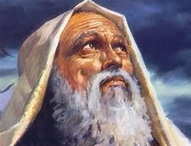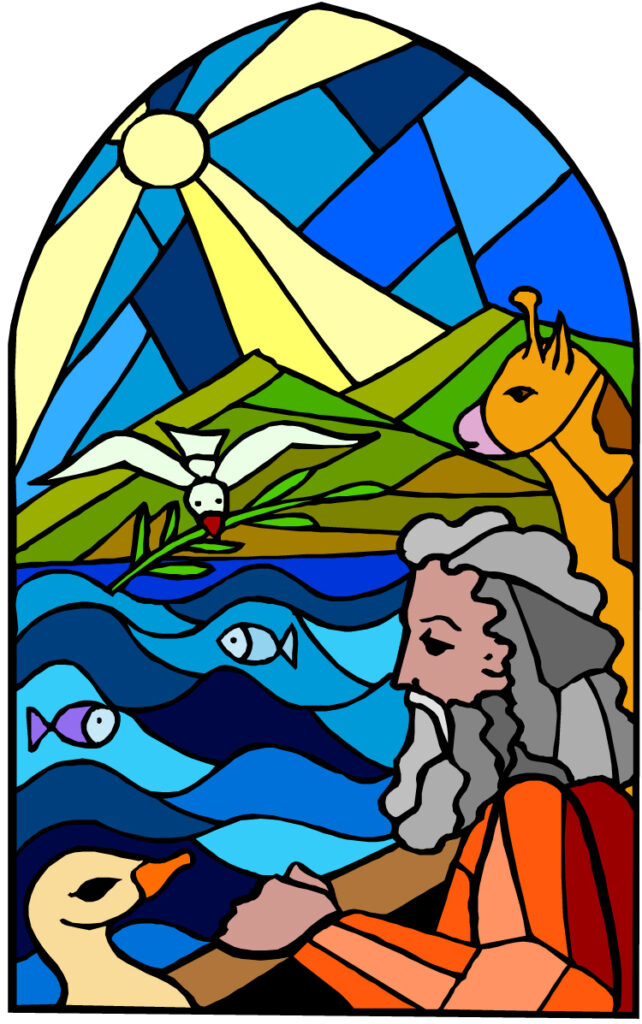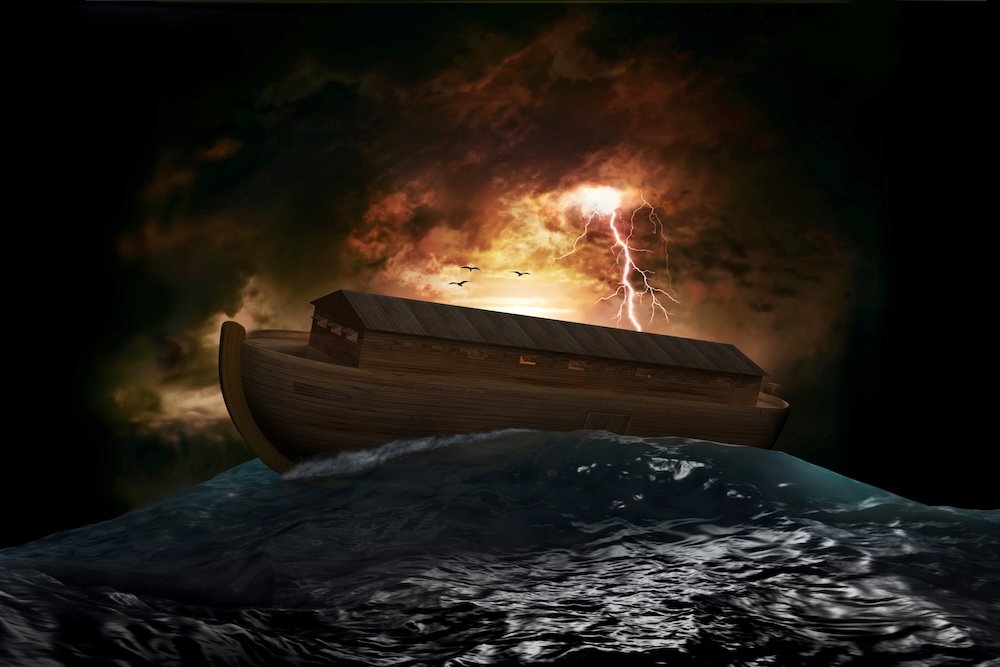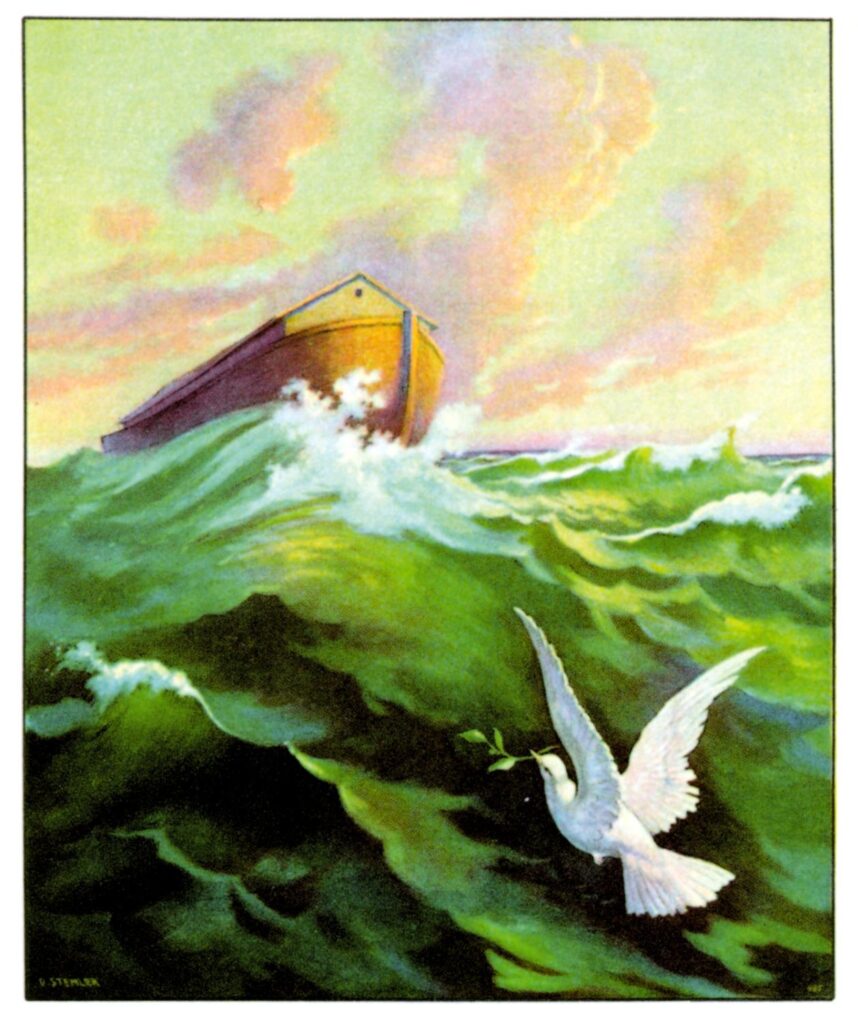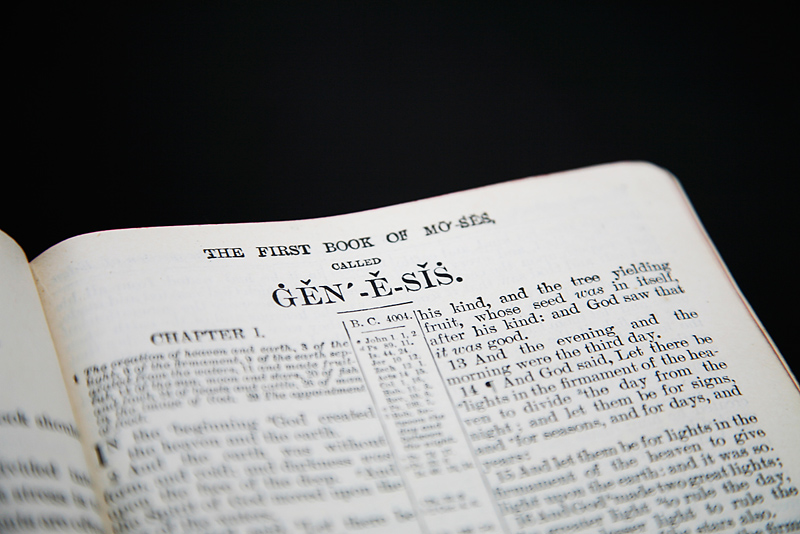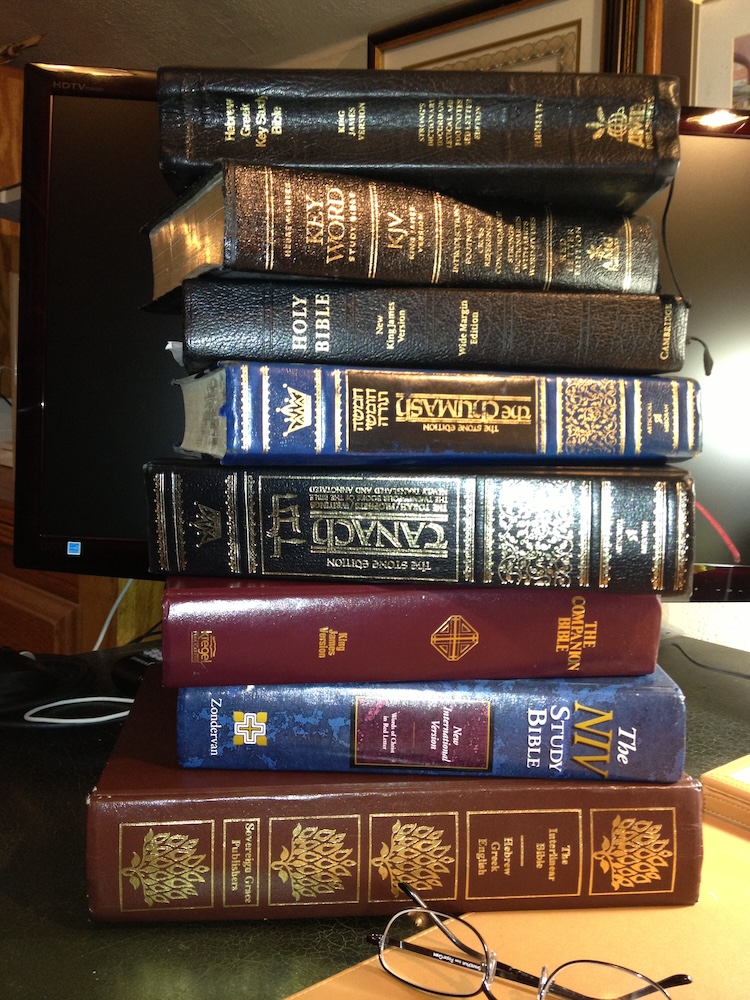
Genesis 18
Genesis 18:1, Then YHVH appeared to him.
YHVH Calls Abraham

And YHVH appeared [Heb. ra’ah the common Hebrew word meaning “to see, look, behold, show, appear, observe, have vision, present oneself, be seen”] unto Abram, and said, Unto thy seed will I give this land: and there built he an altar unto YHVH, who appeared unto him. (Gen 18:1, adapted from the KJV)
There God became visible to Abram and said… (as translated in S. R. Hirsch’s Genesis commentary)
How and in what form did YHVH appear to Abraham? This is the question the Jewish sages have been pondering for two thousand years. On the one hand, the language of Scripture is clear and seems literal enough: “YHVH appeared unto Abram…and said….” Yet let’s now note what some of the most notable Jewish sages comment about this verse.
Rashi, the greatest Jewish Torah commentator of the modern era, has nothing to say about this verse in his commentary. Baal HaTurim, another notable Jewish commentator, in his Torah commentary, does not discuss the nature of the appearance of Elohim. The Soncino Edition of the Pentateuch has no comments on verse seven either. The ArtScroll Bereishis/Genesis Commentary states the following:
And [YHVH] made Himself visible to Abram: The stress is strongly on this visibility. The expression states that, not only was the Voice of God heard, but God Himself, so to speak, appeared, emerging from invisibility to visibility; revealing Himself. This is of far reaching importance because the Torah thereby specifically refutes the view of those who deny actual revelations and consider them products of human imagination and ecstasy. The means by which God spoke to human beings is an eternal mystery. It is enough to recognize that He did indeed speak and reveal Himself to them in some tangible way. (Hirsch, p. 439; emphasis added)
Samson Raphael Hirsch, the great nineteenth orthodox Jewish scholar, in his commentary states,
God made himself visible to Abraham, and said etc. The whole stress lies on this visibility … Far from wishing to give even the very slightest idea of how God spoke to Abraham and to those chosen men to whom He revealed Himself, we still have to note what is actually told us here. The expression used says that not only was the Voice of God heard…but [He was] made visible to Abraham. (Genesis, p. 231)
Here the Jewish sages agree that YHVH literally appeared and spoke to the patriarch Abraham. If he could do this with Abraham, then why could he not send an incarnation of himself in the Person of Yeshua the Messiah? Thus, the idea of the incarnation of Yeshua the Messiah logically should be viewed as not being too far fetched or beyond credulity to the religious Jews of that or this era.
YHVH—Yeshua Appears to Abraham and Sarah and Promises Them a Son

1 And YHVH appeared [Heb. ra’ah, which is the common Hebrew word meaning “see, look, behold, show, appear, observe, have vision, present oneself, be seen”] unto [Abraham] in the plains of Mamre: and he sat in the tent door in the heat of the day. 8 And [Abraham] took butter, and milk, and the calf which he had dressed, and set it before them; and he stood by them under the tree, and they [i.e. YHVH and the two other malakim/heavenly messengers] did eat. 13 And YHVH said unto Abraham, Wherefore did Sarah laugh, saying, Shall I of a surety bear a child, which am old? 14 Is any thing too hard for YHVH? At the time appointed I will return unto thee, according to the time of life, and Sarah shall have a son. 15 Then Sarah denied, saying, I laughed not; for she was afraid. And he said, Nay; but thou didst laugh. 33 And YHVH went his way, as soon as he had left communing [rcs, the common Hebrew word meaning speak, say, talk, promise, tell, pronounce, utter, command] with Abraham: and Abraham returned unto his place.
In this passage of Scripture, we find YHVH appearing in visible form to Abraham (verse 1), most likely eating a meal with him (verse 8), conversing with him and Sarah (verse 13–14), and having an ongoing discussion with him over the fate of Sodom and Gomorrah (verse 16ff), and finally leaving Abraham after this lengthy time of communing or conversing with him (verse 33).
The literal or peshat meaning of this scripture passage should be very clear. There are no hidden meanings, no metaphors or symbolisms. There is no allegorical language. It is simple historical narrative of the events that occurred. The writer presents this event in a literal, matter-of-fact manner. Nothing could be more straight forward. YHVH appears to Abraham in some “diminished,” less potent form that humans can physically endure, and then he interacts at length with them through the partaking of a meal and conversation. But to many a Jewish scholar, the idea of YHVH interacting with humans in such a physical level seems absolutely contrary to what Scripture reveals about the nature of YHVH. The idea of YHVH literally appearing to men is enough to give them fits of mental apoplexy. Such a feat is scandalous and impossible…even for an omnipotent and omnipresent Elohim who has the power to do anything and be anywhere he wants.
So what do the preeminent Jewish sages have to say about this scripture? The ArtScroll Stone Edition Chumash admits that YHVH “visited him to show him honor for having carried out the commandment [of circumcision] and to acknowledge that he had thereby elevated himself to a new spiritual plateau” (p. 78). This commentary goes on to state that the three guests first mentioned in verse two were angelic messengers and that one of the same messengers was speaking for YHVH in verse 13 as his emissary. On what basis do these commentators draw this conclusion that it was not YHVH speaking, as the Scripture record clearly points out? They do not say. They simply state their opinion as if it were fact, yet no exegetical proof is given to prove their assertion (p. 80). As regards Abraham’s dialogue with YHVH over Sodom, the Chumash implies that Abraham was dialoguing through prayer (p. 83), yet states tersely in its commentary on verse 33 that YHVH the Judge departed from Abraham (p. 85). Jewish commentators here seem to understate YHVH’s physical involvement with Abraham by saying as little about it as possible almost, it seems, in hopes that readers will quickly pass over this portion of Scripture without questioning the implications of it; namely, if YHVH could appear to a man here, could he not appear later in the form of a physical, human messianic figure, namely, Yeshua of Nazereth?
S. A. Hirsch in his commentary says even less than the commentators of The ArtScroll Stone Edition Chumash. His commentary on Genesis alone is 688 pages long, yet when it comes to this passage of Genesis, Hirsch has next to nothing to say pertaining to YHVH’s appearing in humanesque form. On verse one of Genesis 18, Hirsch states that “God’s Presence is everywhere, but it is not apparent to everybody” and because of Abraham’s devotion to YHVH through the act of circumcision (see chapter 17) Hirsch seems to imply that due to Abraham’s position of heightened spiritual awareness he was now able to perceive YHVH’s “Presence” (The Soncino Edition Pentateuch/Genesis, p. 310). Yet is this what the Scripture says, that Abraham’s spiritual eyes were opened and now he “saw” YHVH with some new spiritual eyesight? Again, this is not what Scripture states. The plain (peshat) meaning of the text is that YHVH “appeared” to Abraham who saw him with his eyes. Hirsch seems to ignore the peshat (plain) meaning of Scriptural interpretation and implies an allegorical or symbolic meaning to it thus ignoring one of the fundamental rabbinical rules of Scriptural exegesis: the drash or allegorical level of interpretation cannot negate or supplant the literal, plain or simple (peshat) meaning of a passage (Hermeneutics: How to Understand the Scriptures, p. 34, by James Trimm; Talmud b. Shabbath 63a [“…that a verse cannot depart from its plain meaning”] and Talmud b. Yevamoth 24a [“Although throughout the Torah no text loses its ordinary meaning…”]). In his commentary on verse two and three, Hirsch refers to Abraham’s encounter with YHVH as a “vision,” which he sees while he is praying which abruptly ends when Abraham spies the three visitors (p. 313). As Abraham is entertaining the three guests with food (verses 4–8), the narrative immediately transitions to the three guests entering into conversation with Sarah where in verses 13 and 14 YHVH begins speaking to Abraham. He is either one of the three guests, or he reappears after being absent from verses two through 12. What does Hirsch say to this? NOTHING! In his commentary, he skips commenting on verses 13 and 14. He comments on every verse before and after, but not verses 13 and 14, which clearly state and show YHVH conversing with Abraham and Sarah. When we finally come to verse 33 where YHVH “left communing with Abraham,” Hirsch in a very brief comment states, “Finally, this dialog—so to call it—between Abraham and the Judge of the World, in which a creature of dust dares to step before the Presence of God …” (p. 329). Hirsch will not allow himself to call YHVH’s talk with Abraham a dialog, even though that is what Scripture presents it as, so he uses the term “tongue-in-cheek” and suggests Abraham was having a vision, though the Hirsch fails to address verses 13 and 14, which seem to nullify that supposition.
As regards Genesis 18:1, Baal HaTurim, in his commentary says little about the implications of YHVH appearing to Abraham in humanesque form except that for the passing statement, “God chose to dwell in the tent of Abraham” (p. 136) and that “[i]t is in honor of the circumcision that He appeared to him” (p. 137). He then goes on to say that the three guests Abraham subsequently entertains were the three archangels Michael, Gabriel and Raphael. This he deduces from the gematria valuation of the phrase “And behold! three [men]…” (p. 137). It must be noted that though the first two angelic beings are mentioned in Scripture, the last one, Raphael, is not, but is a character of Jewish Apocryphal and mystical literature. On verses 13 and 14, Hirsch, Baal HaTurim has no comment.
Shelomoh Yitzhaki (Rashi) in his commentary on Genesis similarly acknowledges YHVH’s visiting Abraham in verse one, but says nothing beyond that (p. 174). On verse 10, Rashi states that the one speaking here is an angel speaking in the “agency of the Omnipresent” (p. 181). As with the two previous Torah commentators Rashi, likewise forgoes any comments on verses 13 and 14 pertaining to YHVH’s appearance and conversation with Abraham and Sarah (p. 183). The subject is passed over almost as if it did not happen. In verses 22 and 23, Scripture states, “Abraham stood yet before YHVH and Abraham drew near [to YHVH] and said…” (KJV), “Abraham was still standing before [YHVH]” (The ArtScroll Stone Edition Tanach) (implying that YHVH had been there all along and had indeed been part of the earlier conversation (in verses 10–15). To this statement of Scripture, Rashi comments that, “But is it not true that he did not go to stand before Him; rather, the Holy One, Blessed is He, came to [Abraham] and said to him…” Rashi states that this phrase as written in the Scriptures (as noted above) is incorrect and is “an enhancement of the scribes, i.e., authors and editors (p. 188). What is Rashi implying here to the point he questions the way the Torah is written claiming it has been redacted? He does not say. One can only guess, that perhaps the idea of YHVH’s being with Abraham all along from verse one to the present verse does not set well with Rashi, and he feels the need to imply that YHVH had been absent from the scene between verses two and 17, but now reappears on the scene. If this is the case, we must again ask the question, is the idea of YHVH appearing in human-type form so contrary to rabbinic thought that Scripture needs to be twisted like silly putty to fit nonbiblical rabbinic inclinations?
Let us not forget that Rashi, Baal HaTurim and many of the other notable Medieval and early Renaissance Jewish sages were writing during the Crusades and just prior to the Spanish Inquisition. So their view of Christians and Christian theology was rather dim in light of the fact the Jews were being murdered, their synagogues sacked, their books and scrolls burned, and they were being forced to flee from their homes and communities. In fact, in Baal HaTurim’s Genesis commentary (p. 135) is a facsimile of a page from a Torah scroll from Venice (1524) with certain lines of the scroll inked out by Christian censors. Censors regularly entered synagogues, looked over the Jewish scrolls and removed or blotted out statements they felt disparaged Christianity or Christian theology. We are not attempting to justify the Jewish sages’ bending of Scripture to fit their theologies (Christian theologians have also been doing this for nearly 2000 years), but we must understand that this may have contributed to their reluctance to accept the incarnation of deity. Against the contextual backdrop of the times when Jews were being persecuted at the hands of Christians, is it any wonder that the Jewish sages steered wide of anything in their Torah which might even slightly validate a Christian doctrine?
On verse 33, Rashi has nothing to say except, “Once the advocate become silent the judge departed” (p. 191).
So what is the “bottom line,” so to speak, of our above discussion? Simply this. The Jewish sages do not know what to think of YHVH’s appearance to Abraham. They offer differing, confusing and even contradictory explanations. They cannot deny the fact that he was there, yet they attempt to blunt the reality of his being in some human-type form. That just does not suit their fancies, for whatever reasons, and they do everything possible to steer the thoughts of the reader away from that conclusion without appearing to rewrite Scripture to state their opposing viewpoints. All of this confusion is cleared up when one brings into the discussion the ultimate Torah commentary, which is the Testimony of Yeshua (the New Testament). There we learn the truth that prior to Yeshua’s incarnation, he was the Word (John 1:1) or Messenger (incorrectly translated Angel in most of our English Bibles) of Elohim that appeared to Abraham, Moses and several other Old Testament characters. To be sure, this fact, which is at the core of Christian belief, is something that these Jewish scholars are loathe to accept.
Genesis 18:1, He sat in the tent door. Let’s now discuss Abraham’s hospitality. Abraham had just been circumcised. Jewish tradition tells us that he was in the third day of his circumcision when the three guests appeared to Abraham although the Scriptures say nothing about the time interval between the circumcision and the appearance of the visitors. Whatever the case, painkillers, as we know them, did not exist then. The men of Shechem were still incapacitated after three days and unable to defend themselves thus succumbing to the sword of Simeon and Levi (Gen 34:25), yet, according to Jewish tradition, Abraham was entertaining guests and throwing a dinner party—at age 90 no less! If this tradition is correct, what does this say about Abraham’s selfless and generous character? Why did YHVH and his two angelic comrades choose to visit Abraham just after his being circumcised? Had he attained a higher level or state of righteousness after having been physically circumcised? He was physically circumcised, but would they have visited him had he not been circumcised in heart as well? How important is physical circumcision to YHVH? (Read Jer 9:25–26 and Ezek 44:9, which is a prophecy that seems to refer to the “royal priesthood” of the redeemed believers mentioned in 1 Pet 2:9.) Joshua 5:5 says that all the Israelites were circumcised before coming out of Egypt, since they and all those with them were required to be circumcised before they could partake of Passover (Exod 12:43–38).
Continue reading


